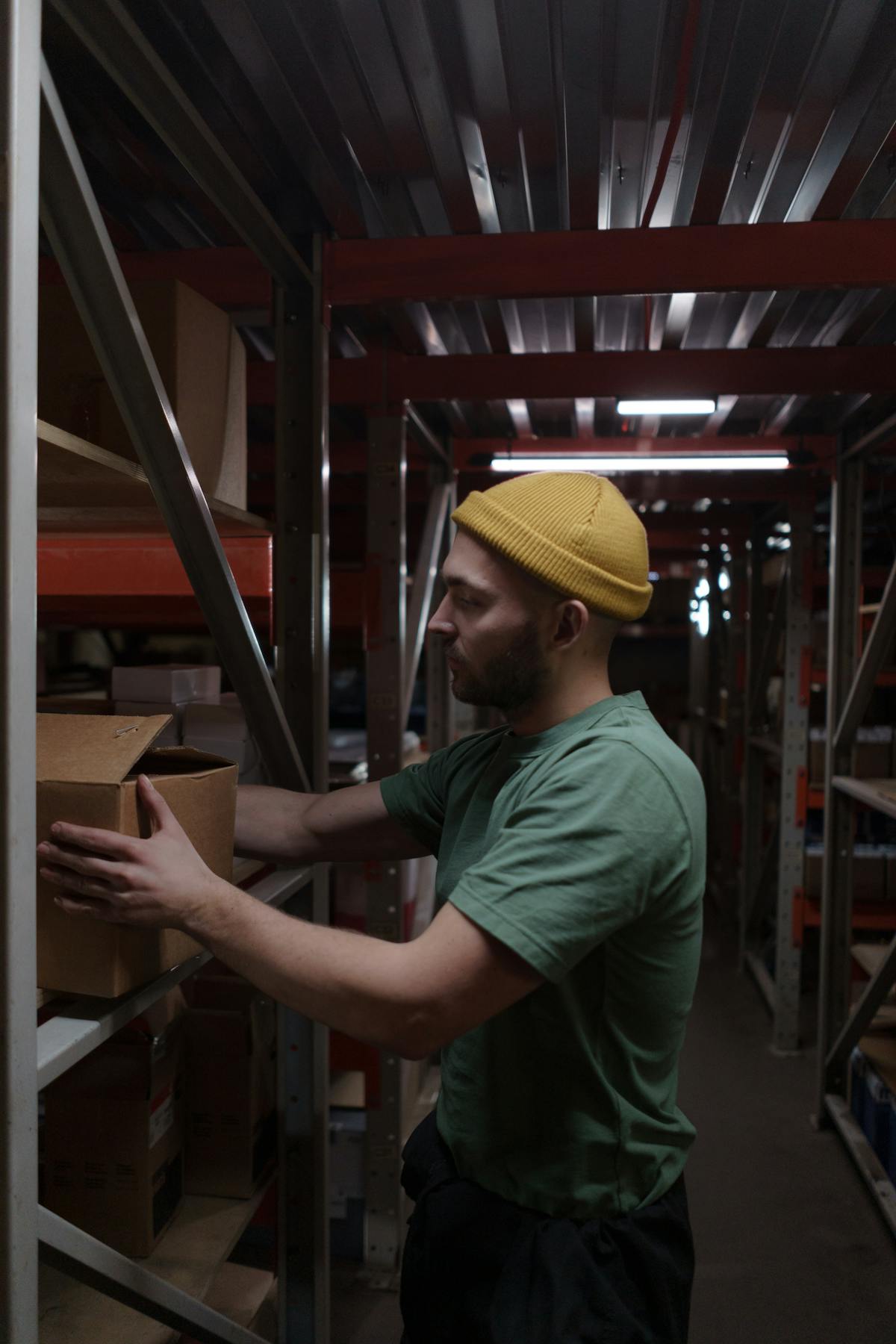3. The Detail about Retail

(Brittany Battaglia and Tommy Chong in WA 2017)
Some people think design means how it looks. But of course, if you dig deeper, it’s really how it works.
-Steve Jobs
Retail Floor Plan
It can be challenging to design the right floor plan and footprint for your store that will be simultaneously appealing to consumers, outclass your competitors, and still work within your budget, while planning to ensure you remain in compliance with the regulations.
You also need to have the fundamentals straight when you think about the logistics of how people will move through your store, where they will stand in line, park, etc.
As a rule of thumb, if I’m in my car and I want to stop at a dispensary to purchase cannabis, I will only patronize locations that have parking lots.
Additionally, you need to develop and build brand equity around an identity, theme, and setting that matches the character of your target demographic of consumers.
As we attempt to hammer home over and over again in this book- you need to create DIFFERENTIATION.
What are competitors doing in your area and other areas and what can you do differently and better to capture your intended customers in a more innovative or engaging way?
How do you balance your shelf space and selection between the clean aesthetic of an Apple Store-inspired footprint, while still being able to offer customers a ‘Willy-Wanka’ experience of a wondrous and whimsical variety of cannabis products?
How do you weigh the number of square feet you need for your overall footprint vs. your cost per square foot of cash burn on real estate?
Who are your customers?





If you do build a great experience, customers tell each other about that. Word of mouth is very powerful.
-Jeff Bezos
This is the most important question in deciding how you want to proceed. Are you in a tourist town going after a never-ending stream of new faces, or are you a local favorite in a small town or bustling urban neighborhood?
Are you going after brand new cannabis consumers or existing potheads?
One thing to bear in mind when making this last decision is that existing pot heads are more likely to be heavier cannabis consumers and therefore repeat customers.
If you are only appealing to soccer moms and adventurous newbies, you may find that they only purchase at infrequent intervals.
Even though this demographic of consumer may have more money, they’re probably not likely to spend more money overall than a customer that might be lower on the economic totem pole, but ‘higher’ in their rate and volume of weed consumption.
To win this frequent customer though, you will need prices that are as close to competitive to the black market as possible and moreover, you have to be able to offer them something that they can’t get on the streets- a vast selection of the highest quality products available.
When a customer comes into your store they should witness an abundance of choice. We’re not saying you should write a novel like a menu at The Cheesecake Factory, but your only way to really outclass the black market is through a far superior selection and a vast variety of products.
Once you have identified your target audience then you can figure out more about them, what they’re looking for, and start figuring out ways to reach and engage them.
Make Educated Guesses but Keep Learning

Spend a lot of time talking to customers face to face. You'd be amazed how many companies don't listen to their customers.
-Ross Perot
At the same time as crafting a plan to micro-target the right consumers in your area, you also shouldn’t assume you know who they are or what they want until you have verifiable, directional data derived from sales and transaction reports to back up your guesses.
Cannabis Industry Insider, Brittany Battaglia, was brought into a cannabis retail store to help clean up the mess that had been created by over-ordering edible products that were thought to be appealing to the ‘older’ demographic of consumers in the area. This had created a backstock of inventory, waste, and mess that led to a bad rodent infestation in the store, and costly products that had to be destroyed.
Even if you’re offered a ‘once in a lifetime deal’, on a bulk purchase, it would be far more prudent to wait until you get more ground truth on what consumers in your area are actually responding to, and not what you think they will.
Thematic Elements and Setting

(In 2011, ingenius ganjapreneur, Bic Pho, opened up a chain of beautifully themed dispensaries in San Jose, CA, including their flagship store, the Yerba Buena Amber Pearl, which featured a life-sized wooden pirate ship, cave walls, and related thematic elements. Of course this vision was far ahead of its time and place, and this awesome location was eventually shut down buy the city.





The environment is everything that isn't me.
-Albert Einstein
Developing a great theme for your store, or even having any theme in general, will help you create differentiation and steal attention from the shop down the road whose only discernible theme is, ‘Pot Store’.
A good theme can be anything from attention-grabbing music memorabilia to a dispensary shaped like a pirate ship, or a pot store where all of the employees are dressed as vampires.
While your theme probably doesn’t have to be as dramatic or extreme as the setting for a haunted house, or dressing up every day as a new fan-fiction character from the Harry Potter universe, incorporating any consistent thematic elements into your design and identity will help you carve out a unique brand and create additional traffic driven by novelty and word of mouth, organic marketing.
Think of a theme that will be appealing to the consumers in the demographics that you are targeting with something that would be specifically appealing to or representative of, the character or demographic of your area.
In a sleepy Victorian-themed town on the coast of the Puget Sound, on the Olympic Peninsula in Washington State, Brittany helped take over management at a dispensary that was number one in sales in their area, during her tenure there.
Visitors flock to this famous seaport community every year for a bunch of whacky festivals, and to visit the local cideries. It’s also a popular tourist and retirement destination for seniors, so everything in town closes early.
The store where Brittany worked had a Victorian theme to match the local character of the neighborhood, and as a gimmick to appeal to tourists.
Shelf-Space and Assortment

(Pictures from Green Cross Emporium, of Salem, OR.)


(CBD brands battling it out for space at grocery, and in other mainstream retail channels.)
Nobody goes there anymore. It's too crowded.
-Yogi Berra
Big retail chains utilize what’s known as a ‘plan-o-gram’ when they buy products. A plan-o-gram is an inventory and merchandising tool that allows the retailer to visualize the physical placement of products from different vendors in specific shelf locations on their floor plan.
While this might seem on the surface to be overkill for a small business, this is an amazing way of planning your assortment, shelf space, and merchandising goals, enabling you to leverage the collection of your data to learn to drive sales of top-selling SKUs and placement positions, allowing you to maximize your retail shelf space potential.
When Brittany helped manage the inventory at the store, she would look to ensure that products were constantly in-stock and that there was a logical, well-organized, system of back inventory, that was accounted for in the State’s traceability system and software interface.
When a new product was introduced, she would help make sure that each product on the shelf being merchandised had a clear label stating pricing and other critical product info, like brand, strain, cannabinoid percentages, % Indica/Sativa, etc.
Sometimes when you go into an expensive store and you look at an item you like, there is no information available about how much it costs and you have to wait for someone to come over and help you or take the item up to the register. They do this so that you will form an emotional attachment to the product and be able to envision owning it. They don’t want to deter your imagination by breaking the illusion and exposing your mind to a cost which might seem totally out of reach at first glance.
Definitely, do NOT employ this tactic in your store. Not only will it confuse your customers, and irritate your budtenders, but worse yet, it will slow down the line, leading to less revenue and lost business.
Ambiance


(Planet 13 has upped the game with their world famous Las Vegas dispensary resort, Planet 13.)

Life is full of awe and grace and truth, mystery and wonder. I live in that atmosphere.
-Dion DiMucci
Many people are so sensitive to lighting to the point where they will even boycott certain chains and cancel culture them over the aggressive light bulbs they use. As a rule of thumb, you want your customer to have an ‘illuminated’ experience.
While dim candlelight may be appropriate when you’re outside smooching with that special (or in some cases, not so special) someone, and maybe you don’t’ want any more light in that case, because that would mean that you might actually have to see what the other person looks like and that would sober you up in a hurry!
In a cannabis dispensary though, customers want to see the product they’re going to buy. Adequate, if not abundant lighting is therefore required.
That being said, and as we’ve brought to ‘light’ in this book, cannabis is sensitive to photo radiation.
How do you balance the need for the consumer to see what they’re buying with the responsibility to keep the product shelf-stable, in good condition, and from perishing before your customer gets to experience it? That it was the farm that didn’t properly protect the flowers from degradation with their packaging is beside the point. You are the one who decided to stock their product, so your customers at the very least won’t trust your judgment anymore if their experience of the product isn’t good.
Even if your customer doesn’t understand why they might have had a bad experience, you might suspect why flowers that had been sitting in a clear plastic bag unsold for months in the light, might no longer meet the quality standards that they’ve come to expect from you and your business.
Unfortunately, there’s no easy answer to this challenge, however many states allow the vendor to put a sample of a flower on display in a glass jar with a microscope so that the customer can get a close look at the beautiful sticky trichomes under a high-powered lamp. This is essential POS marketing!
Meanwhile, many vendors offer products whether bags, jars, etc. that come in opaque, light-resistant packaging.
In many states, cannabis vendors can also provide the store with a ‘sniff jar’ which is a clear glass jar with a lid you can lift to reveal screens beneath, which will release the odor of the cannabis sample. Supposedly this is so that the customer can experience the bouquet of the flower before purchasing it.
That being said, this gimmick backfires pretty much 100% of the time, because the terpenes are volatilizing all day long in the bright dispensary lights and the vapors escape every time a customer opens the jar to smell it. The flowers in turn quickly lose their aroma and become negative advertising for the brands that placed them there if not managed properly.
Discounts, Promotions, and Events

Someone told me that each equation I included in the book would halve the sales.
-Stephen Hawking
Part of running a successful retail business is your ability to engage your local community and keep bodies coming through the door. This is where the value of discounts, rewards programs, vendor days, and community outreach & education can all help set you apart from your competitors and help you create and maintain a steady flow of loyal customers into your business.
Consistency

Success isn't always about greatness. It's about consistency. Consistent hard work leads to success. Greatness will come.
-Dwayne Johnson
Farming at its nature, even for the best growers, is a hit-and-miss game. While it may seem like some have it down to a science, it is more likely that they can afford not to put their lesser results on the market. Many producers may get lucky one harvest but the next one may end up fighting pests, nutrient deficiencies, or even be forced to an early harvest on account of weather, or some other ‘act of God’. This applies to indoor grows as well. Just replace weather with HVAC and nutrient deficiencies with labor issues. Because God works in mysterious ways. So many things can change from one batch to another that it is best to keep testing the product even if market regulations may not require it. This is certainly suggested for your best-selling lines.
Don’t be shy in asking your vendors for samples from each and every batch. We know it’s hard work to test that many strains, but you’ll have no problem finding a panel of experts who will be willing to volunteer their time to help alleviate the burden of your assessment.
There are many motivations and possible reasons why a producer might put out an inconsistent batch of products. A common cause is rushing one’s product to market. Sometimes it can’t be avoided and is the result of a last-minute desperation to keep the lights on.
Many brands offer ‘A’ grade and ‘B’ grade lines of flowers. If they do not, and if your vendor is bringing you inferior quality products, you may consider asking them to downgrade their label and their prices and help inspire them to ‘B’ themselves.
Try negotiating a discounted price to reflect the appropriate value proposition of the product to your customers. Your customers won’t be upset with an inferior quality product if their expectations are calibrated by pricing and shelf placement.
Customers love this because when their budgets are tight, they can still buy larger amounts of lower-quality buds from their favorite brands that might not look as good or be as big, but will still get them high.
Less is More!

If I'm going to die of anything, it's going to be gluttony.
-Justin Timberlake
As much as you want to stock your shelf with a variety of different strains, it would be wise to find multiple brands to work with that respectively specialize in a handful of strains each. Many growers will pump out as many strains as they possibly can to attempt to capture more shelf space. However, growers that focus on fewer strains will most likely be better able to accommodate and master the unique needs of each strain and in turn, be more likely to produce a more consistently good product.
Many of the best growers in fact will focus on just a few signature strains of brand new, custom, special, and/or hard-to-find genetics.
Companies that carry too many strains often seem to be much more inconsistent. From batch to batch your customers may have entirely different experiences of this brand’s flowers ranging from completely satisfied to ‘going postal’, leaving you scratching your head on whether or not you made the right buying decision.
Vendor Management


A company is known by the people it keeps.
-Will Rogers
Get to know your supply chain including producers, processors, testing labs, software vendors, banks, payment solutions providers, and so on. By establishing personal relationships at every stop along the supply chain you will ensure you will always have access to the best products and on-time deliveries. If it’s legal in your state to wine and dine your vendors, then this is a vital tool that will help you gain access when it is needed, and help you further bolster your network.
Remember, if your product quality and variation are the keys to satisfying your customers then you need access to a consistent supply chain starting from the very best products on down. This will help to ensure that you can stay competitive in your area.
Sometimes though and for whatever reason, a certain SKU from a vendor just won’t move in what otherwise appears to be a healthy market.
Most of your vendors will work with you to help accommodate your needs within reason and retain your business. If you need to return products that aren’t selling, some may be willing to take the inventory back or exchange the items for different products. Remember, JUST DON’T BE A DICK.
You could even negotiate a better deal and discuss ways that you can get more engagement out of the partnership.
If you have good enough relations with your vendors, you may even be able to lean on them for support during tough times to supply you with products at a discounted rate or even on consignment if that is permissible in your state.
As a general rule of thumb in business and in life, people appreciate someone that’s always trying to figure out how to add value to any situation that they’re in. If you can leverage your assets to help someone in your network even if there’s no clear or immediate gain for you from the action, you’ll create a bank of goodwill, that you may be able to draw from down the road.
With all that said, the key to good vendor management is cultivating good relationships and knowing the quality of the product you are putting a price tag on. A good relationship helps ease any questions arising on either side of the partnership. While knowing the quality of the product you sell will inform your inventory and pricing decisions. In the best-case scenario, it should help reduce, if not eliminate, the need for vendor product returns.
Inventory Management


An expert is someone called in at the last minute to share the blame.
-Sam Ewing
When Brittany was brought into her job at the dispensary in Washington, the inventory system she inherited was a mess. There was an entire room filled with old returns that vendors hadn’t accepted. This was dead money. Many of these items would have to be destroyed. Worse still, a good portion of the inventory wasn’t properly accounted for in the traceability system. Brittany had a real mess on her hands. It was so bad in fact, that when she went to clean up some old edibles that were left sitting on the floor ,Brittany was attacked by and had to fight off a giant rat that had staked its own claim to the store’s inventory.
You should always follow the ‘First-in, first out’ rule of thumb which means that the oldest products are being cycled out first ensuring that customers will be getting the freshest products possible and that older inventory doesn’t get stuck languishing in obscurity on the back of the shelf.
There’s nothing worse than buying a joint only to get it home and have it turn to dust because it was made from an ancient, three year old batch of trim.
You also want to track the wholesale price of your inventory batches, so that you can appropriately price productsat the counter when the revenue stream allows it. This could allow for discounts that could be the result of a reduced cost for lower quality products, if you are tracking it. The same goes for a higher-potency product, often translating to a higher wholesale price, which you can then easily pass to the consumer, as long as the increase is warranted.
If you don’t have a good inventory system in place, disaster will surely follow. When you take into account the state traceability requirements, not having an organized digital inventory system in place is a recipe for terrible, terrible consequences.
Even the smallest stores could have thousands of SKUs, creating exponentially even more opportunities for human error.
Beyond avoiding the worst-case scenarios of suspensions, fines, product and license seizures, a proper inventory management system will give you the information you need to know how to most efficiently buy and sell products, and crucially will inform your decision making in budgeting and cash flow management.
If you have real time analytics you can see right away if a product line isn’t moving. This basic business intelligence gives you flexibility if you need to sell it on a promotional discount in order to cut your losses before the product gets even older and the quality and salability are that much further decreased.
Returns, if allowed in your market, are not ideal for your vendor either. The products you’re sending back are likely to have a depleted shelf life if they’re still even sellable from a quality standpoint. For whatever painstaking duration of time that your flowers have been languishing unsold on your shelves, like a sad, aging orphan, that keeps getting passed by, day by day, your flowers will lose their character, from the light and the ambient heat, and may even run away to pursue a life of crime and delinquency.
Remember what we learned earlier about the degradation of your terpenes and THC, so please don’t make light of photophobia.
In practice, returns can be impractical and expensive for your vendor especially if they’re coming from far away. If they have to process too many returns, and spend endlessly on overhead to chase down losses then they’ll go out of business before too long.
Working things out with your vendor and making their lives as easy as possible will pay off in the long run. Not only through another deposit in your bank of goodwill, but likely in your actual bank account too, when your customers respond well to the best products at the best prices around.
Staffing

You can build a throne with bayonets, but you can’t sit on it for long.
-Boris Yeltsin
What Brittany learned about managing retail, is that nothing is more important than having the right team in place. The other keys to success- organization, competitive pricing, managing inventory, and programming in customer appreciation, are all more or less straightforward and don’t rely on understanding and game planning for the perplexing, complex, and often disturbing behavior of the so-called humans that are working on your staff.
Your team is who your company is. Your personnel is your identity, from the face of your business at the point-of-sale, to the managers representing your brand and business to vendors and law enforcement.
It’s important that you navigate through the forest of HR (human resources) regulations, to put together a winning staff that can make or break you and your business.
Remember what we said earlier in the enforcement section about not being a dick?
In an enforcement system that is driven by anonymous complaints, any jaded ex-employee, business partner, or significant other could potentially be a big liability, even if their claims are totally frivolous.
When the inspector comes to investigate an anonymous complaint, they’re a human being. They may be annoyed, depending on how far they had to drive that day. Or they were just having a bad day. Even if you prove to be innocent of a frivolous claim anonymously levied at you, they may just decide to write you up on some ticky-tacky stuff they turn up when they’re digging around under the hood.
You also have to ensure that your employees are properly up to date and trained on regulations and compliance, because their ignorance will not let you off the hook for an infraction.
While there’s no way to completely protect yourself from the spite and fury of an employee scorned, there are some common-sense best practices you can follow to help mitigate any potential liabilities that you could face.
Carefully vetting and screening candidates for employment is a great way to avoid the problem in the first place. Should that fail, having confidentiality agreements in place, and a clear written record of your employee’s work history are standard protocol that will help you in the unlikely event that you have to go to court. However, these will not save you from a random inspection inspired by an anonymous complaint.
At the end of the day, there are only two things you can do that will increase the odds in your favor, if not provide a guarantee of results-
1) Be a good boss and person!
2) Stay in compliance!
Budtenders – Your Face at POS

(Photo courtesy of Green Godess dispensary in Portland, OR.)
I haven't spoken to my wife in years. I didn't want to interrupt her.
-Rodney Dangerfield
If your customer has a bad experience at your store, they may go and find another place they like better, and never, ever come back again. Worse yet if your store is in a small town like Brittany was in, the disenfranchised customer will likely tell everyone they know how terrible you are and how much your store sucks.
Here your challenge is to find budtenders that are likable, charismatic, and outgoing, while also honest, responsible, punctual, and organized.
It’s helpful if your budtender loves pot and can recommend products that they’ve personally tried before. That being said, as we keep hitting on in this book, you don’t want your budtender to be stoned-stupid at work.
While you want someone that will be friendly and talk with your customers, this can quickly backfire if friendly, small talk escalates to idle chat resulting in a failure of customer line and traffic management. No one likes to wait when they’re just making a quick stop on their way somewhere else. What’s even more frustrating is when you’re waiting behind another customer online that has found an indulgent budtender willing to jabber on about small-town gossip, and other juicy tidbits of time-wasting details.
One time an employee at the store where Brittany was working had accepted a container of brownies from a vendor that were improperly packaged and labeled as edible samples. This employee thought that she was eating a regular brownie at work, and given her lack of concern, one brownie turned into two, which became three brownies, until finally, she had inadvertently eaten four pot brownies at work!
Within an hour this employee was stoned out of her mind and making increasingly bad decisions. The worst part though, is that she got so high, she left the tray of brownies in the employee fridge, without warning anyone that they were medicated. This continued the vicious cycle of employees inadvertently getting baked and in turn exposing more employees to a surprise and accidental intoxication which would continue throughout the day.
This was not only a gross failure of judgment on the part of several parties involved in this strange incident, but more pointedly, there was a breakdown in procedures and SOPs for preventing this situation from occurring in the first place. No one should ever have accepted any improperly packaged samples from the vendor, so everyone got an ‘F’ for this one.

Need help with your design?
The expert at My Pipe Dreams have touched every vertical of the biz, and we’re here to share our knowledge with you!
Goals and Game Theory

I think it's wrong that only one company makes the game Monopoly.
-Steven Wright
I’ve written before in this book that the difference between people who make something of themselves in life and those who stay glued to the couch instead, are the ones that take action. You can take that back even a step further to a more fundamental factor. And that essential truth is that you are only as good as your goals. If you set mediocre goals, or worse no goals, in life you will achieve mediocrity or nothing, it’s that simple!
In fact, the vast majority of people who have very little ambition, and even some of those that do, set goals for themselves in their lives for the most part, that don’t aim to amount to much. Most people are told by their parents, their teachers, their friends, television, the media, and society at large to think realistically. Shoot for the middle of the pack. 50-70k a year and you’re almost there. If you get married and your partner works, then welcome to the middle to upper-middle class.
On the other hand, if you have ridiculously ambitious goals there is less competition in your lane, because so many people have taken themselves out of your way and out of contention with their choices of goals in life.
Everyone on your team needs a goal to help drive and motivate them. They should be incentivized by a reward if successful. Instead of a chore, try and turn it into a game.
Help your team stay on target by giving them a list of the items you want them to push each week. Make it a competition by giving a bonus to whoever has the most success in achieving the individual goal challenge. Also institute a team goal with a bonus that is awarded to all employees for clearing group performance hurdles.
Engage your team and have them help you, white board the targets, goals, collective mission, culture, protocols, rules, rewards and consequences of your workplace. If your team has an input in helping you craft the benchmarks of their performance and the rules that guide their behavior, they’ll hopefully take pride and a sense of ownership in their position. Furthermore, if your employees get a voice in the process, it will be that much easier, and offer you more clarity on deliverables, in being able to hold them accountable for their behavior, conduct, and activity or lack thereof, as a part of your business.
Lastly, just buy them lunch every now and then and say, “thank you”. The leader is the perfect person to model appreciation and the ease to acknowledge someone’s good work. A couple pizzas or a box of donuts can go a long way, although your team might blame you later on for contributing to their type 2 diabetes.
Category, Procurement Manager, or Buyer

Whether you’re personally already an expert cannabis appraiser or you’re a resource rich hedge-funder brand new to the industry, no one person can do it all. So, if you want to be able to scale your business, eventually you’ll need to be able to focus on the big picture and be able to successfully train and delineate tasks to qualified personnel.
As you might imagine you won’t be wanting for applicants for your marijuana buyer and evaluator, but it’s more difficult to find a quality person that understands the multifaceted dynamics of a role with responsibilities including but not limited to taking the lead and/or assisting with vendor relations, product evaluation, purchasing, traceability, and data management.
So while you want your category manager or ‘pot buyer’ to be able to be able to make experiential based judgmentcalls, you also don’t want someone who will get ‘high AF’ all day while neglecting an orderly, well organized and well managed pipeline of customer, inventory, and accounting information.
Ideally, they should conduct evaluations and convene sampling panels outside of the workplace. There are a number of different rating systems you can have them employ to judge the sample but for simplicity’s sake we’ll go with a classic, the old ‘1 through 5’.
You also want them to give you additional feedback on qualities of the product and how it made them feel. At bare minimum be sure to ask in your survey about appearance, odor, flavor, effect, and experience.
Make sure to have the proper protocols in place to ensure that your category manager doesn’t fall under undueinfluence from any one vendor.
That vendor may have done a better job than their competitors at lobbying, leveraging, being likable, funny, endearing, charming, handsome or beautiful, or taking your Buyer out to a Seahawks game. Regardless, that doesn’t necessarily mean that they are more successful than their competitors at creating better products or growing better pot, and make sure your buyer lives and breathes this, while still enjoying the “perks” of their position.
Your customers won’t care if the vendor that your category manager is buying from went to the same college, knows someone’s sister’s best friend’s cousin, or is selling themselves as a sex-gimp for the sake of winning new business, they only care if the product you are offering them is up to par or hopefully even exceeds their expectations for their experience.
On the other hand, some vendors have great, highly sought-after products, to the extent that you may get ‘wait-listed’ if you attempt to get their product on your shelf. You and/or your Category Manager will have to do something to set yourself apart or find a way to break through to that vendors’ inner circle.
Sometimes to do this you might have to get creative or try to employ some guerilla marketing approaches.
Which brings us to… (the next chapter)
The wheels are turning, but the hamsters are all dead. Make it idiot-proof and someone will make a better idiot. I learned long ago, never to wrestle with a pig, you get dirty; and besides, the pig likes it.
-George Bernard Shaw
Key Chapter Takeaways
The Do’s and Don’ts of the Dope Industry
- Do– Put thought into creating an experience with your ambiance, theme, and/or floor plan design
- Do– Invest time or resources in making sure your company has great vendor relationships
- Do– Keep a really tight and controlled digital inventory system
- Don’t– Over-clutter your shelves with so much products that it becomes hard to see
- Don’t– Let your budtenders cause customer traffic jams with too much chatter
- Don’t– Let your buyer get too close to your vendors